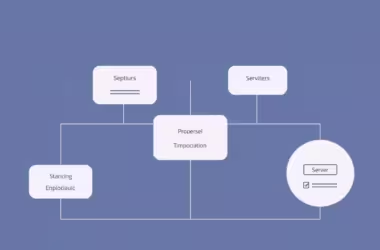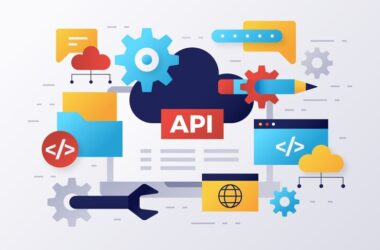The Command and Query Responsibility Segregation (CQRS) pattern is known for boosting performance, scalability, and security. It splits read and update tasks. This is different from traditional CRUD setups, where both actions use the same model. Often, these old methods face problems with mapping objects, slow performance, and data issues.
With CQRS, handling commands and queries becomes smoother, avoiding data problems and complex mapping. It separates the read and write sides of data. This not only makes the application simpler but also helps in scaling and securing it better. It makes apps more responsive and trustworthy.
Key Takeaways
- Employing the CQRS pattern can improve data store consistency.
- Traditional architectures face challenges like performance bottlenecks and data contention.
- Decoupling read and write operations optimizes command tasks and query performance.
- CQRS can enhance application responsiveness and reliability through targeted scaling and security measures.
- Using separate models for read and write operations simplifies data management and improves system efficiency.
Introduction to the CQRS Pattern
The Command and Query Responsibility Segregation (CQRS) pattern is aimed at separating data changes from data reading. This approach helps in making apps perform better and keep data consistent.
What is CQRS?
CQRS focuses on differentiating commands that change data from queries that just read data. By doing so, it allows for better optimization of each part. This results in benefits like improved performance and scalability.
History and Evolution of CQRS
The CQRS idea comes from Bertrand Meyer’s Command-Query Separation principle. Originally, it was about keeping state-changing methods and data-retrieving methods apart. This principle laid the groundwork for today’s CQRS approach.
As software became more complex, the need for CQRS grew. It helped developers handle complicated tasks more easily. This has led to better ways to scale apps and maintain data accuracy.
Context and Challenges in Traditional Architectures
Traditional database systems often stick to one model for handling both reading and writing. This leads to problems as the system gets bigger and more complex. We’ll explore the difficulties such traditional setups face.
Complex Queries in Traditional Systems
Complex queries reveal the limits of traditional systems. Using one model for different tasks makes mapping objects harder. These systems find it tough to handle advanced queries because they use a one-size-fits-all approach to data.
Performance Bottlenecks
As databases grow, they often hit a wall with performance bottlenecks. More demands on the system mean slower answers to queries, which slows down the whole app. Since the same model is used for all tasks, it’s not tuned to deal with heavy reading or writing separately.
Data Contention Issues
Traditional databases run into trouble with data contention too. When reads and writes happen at the same time on the same data, it can cause mix-ups. This also makes managing security and permissions harder.
Benefits of Implementing CQRS Pattern
Using the CQRS pattern can change your system for the better. It smoothly balances the tasks of handling commands and queries. This approach brings many benefits that boost performance and security.
Data Consistency
CQRS majorly improves data consistency. It does this by separating command and query tasks. This means data is recorded accurately, and mistakes are rare.
This setup makes the system run smoother. It avoids mix-ups between reading and writing data, keeping errors away.
Scalability Improvements
CQRS makes it easier to handle more work by scaling tasks separately. You can tweak systems to work better, depending on the need. This means faster access and a more responsive system.
This method greatly reduces slowdowns. It boosts overall system performance no matter how complex the tasks are.
Security Enhancements
CQRS also steps up security. Having separate setups for commands and queries helps tighten security measures. This helps in controlling who can see or change data more easily.
It makes write and read actions more secure. Strong security checks and measures ensure data is safe and sound.
Core Concepts of CQRS
To get the most out of CQRS, knowing its key principles is crucial. It separates command and query tasks. This way, each task does what it’s supposed to do, without mixing roles.
Commands vs. Queries
Commands act to change the data. Take the ‘book hotel room’ action as an example. It updates the database. Queries, however, just get data and don’t change anything. They often use Data Transfer Objects (DTOs). CQRS keeps these tasks apart. This makes the system run smoother, improves speed, and keeps things clear.
Task-based Command Design
CQRS focuses on task-based command design. In this system, commands target specific business activities. This approach cuts down complexity and boosts ease of care. Commands outline their goals clearly. This makes the system neater and easier to tweak and improve.
Data Transfer Objects (DTOs)
In CQRS, DTOs are really important for making queries faster. They package up data to move it around. This keeps commands and data reading apart. DTOs make sure only the needed data is returned. This makes things run more efficiently with less wasted effort.
So, understanding CQRS’s basics like command task design and using DTOs is key. These elements help make systems more efficient and organized.
Architectural Components of CQRS
The CQRS pattern separates the command and read models. This means each part works better for its own tasks. This setup avoids problems and keeps the system fast, scalable, and accurate.
Command Model
The command model deals with system updates and changes. It ensures tasks are done right and business rules followed. By focusing on commands, it reduces the chance of errors and conflicts.
Read Model
The read model makes data easy to get and use. It’s set up to work fast for searches and getting information. This includes pre-made views, making data quicker to access without extra calculations.
Message Queue Systems
CQRS message queues are key for working in the background. They let commands run without slowing down the user. With message queues, the system stays quick and accurate, updating the read model when necessary.
Implementation Strategies for CQRS
Using CQRS means we need to manage how commands and queries work together. Strategies like asynchronous processing and event-driven architecture are key. They help improve how the system performs and can grow.
Using Asynchronous Processing
Asynchronous processing lets writes happen without needing immediate confirmation. It uses message queues to make the app more responsive. Commands are dealt with fast, making the system more efficient and avoiding delays that come with waiting.
Event-driven Architecture
An event-driven approach is at the heart of good CQRS. It captures changes as events, spreading them across the system. This keeps the read model up-to-date with the write model. It also lets parts of the system grow on their own, which is great for systems spread across many places.
Handling Eventual Consistency
Event-driven setups and asynchronous processing are great, but they make consistency a bit tricky. In CQRS, we aim for eventual consistency, meaning all read operations will show the latest data after some time. Achieving this needs a mix of careful event management, fixing errors well, and knowing how to deal with time delays and data sync issues.
Challenges and Solutions in CQRS Implementation
The Command and Query Responsibility Segregation (CQRS) pattern boosts architectural clarity. Yet, it introduces several complexities. Overcoming these difficulties is key for smooth pattern implementation.
Managing Complexity
Addressing CQRS complexities begins with understanding the challenges of splitting command and query operations. This split makes defining system boundaries tricky, increasing application complexity. To tackle these issues, document command and query roles clearly and ensure a strong testing environment.
Messaging Failures
In CQRS, components must communicate effectively. When messaging fails, it can cause synchronization issues and inconsistencies. To prevent these problems, use a dependable messaging system and set up solid retry methods. Also, have backup plans to deal with message delivery issues.
Eventual Consistency Problems
Eventual consistency is a big challenge in CQRS. It differs from immediate consistency because the read model might not update as quickly as the write model. This discrepancy can cause short-term data mismatches. Address these challenges by syncing data carefully and teaching clients about potential delays.
Case Studies and Practical Examples
The CQRS pattern shines in many real-world cases, showing how versatile it is. Financial institutions use it to keep data accurate and boost system speed during busy times. E-commerce sites use it to manage tons of orders and customer info well, making sure that searching does not slow down updating.
Real-world Implementations
Amazon is a big name that uses CQRS. It helps them separate searching from updating. This makes their system run smoother and keeps data reliable. Netflix uses CQRS and events to handle user info well. This approach helps them scale and stay reliable without hurting the system’s core.
Lessons Learned from the Field
These real examples teach developers important points. It’s key to know your area well and use CQRS with care. Sticking to the best methods, like keeping command and query models apart and having strong error solutions, makes systems work better. Also, companies need to think hard about the balances with eventual consistency. This helps them meet their goals and gives users a great experience.






